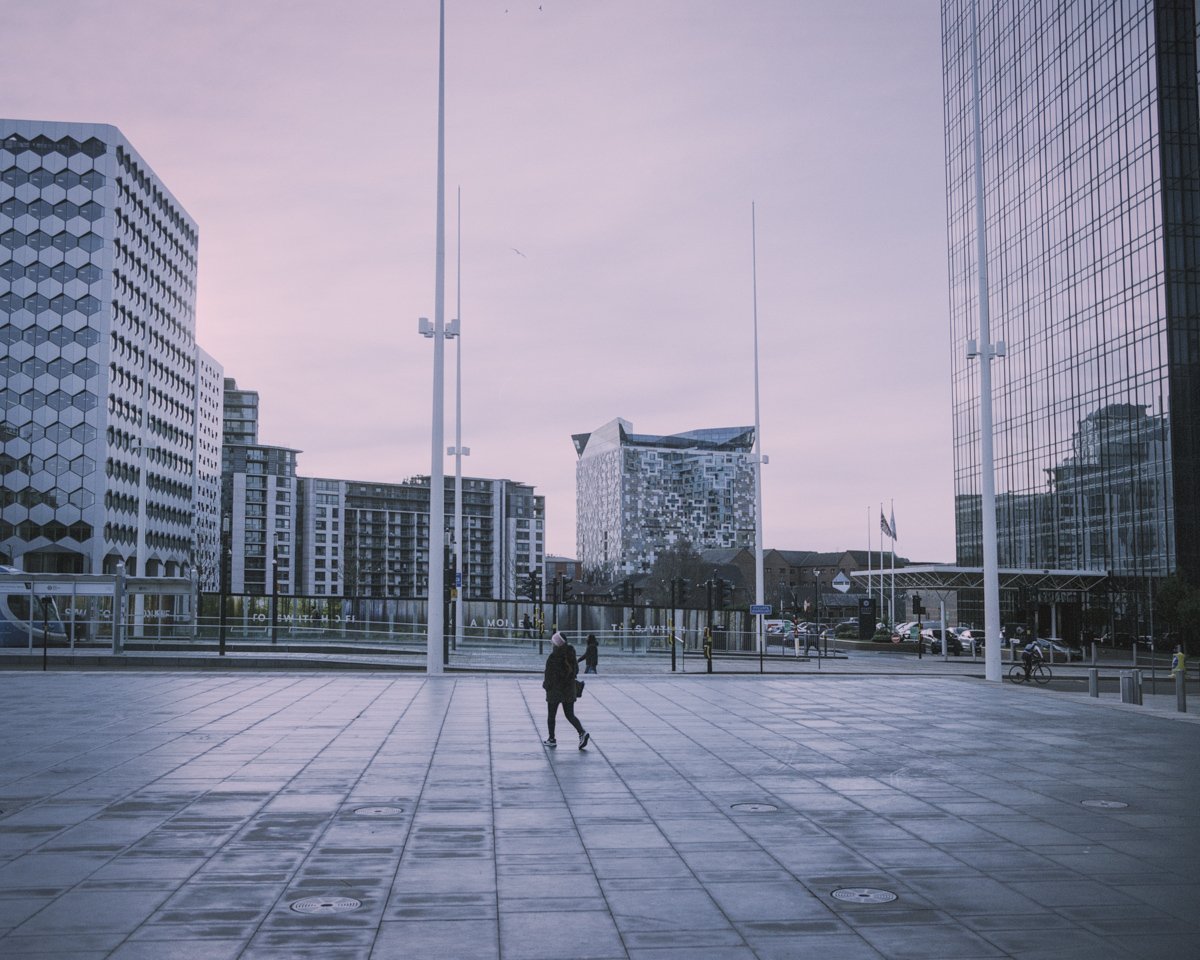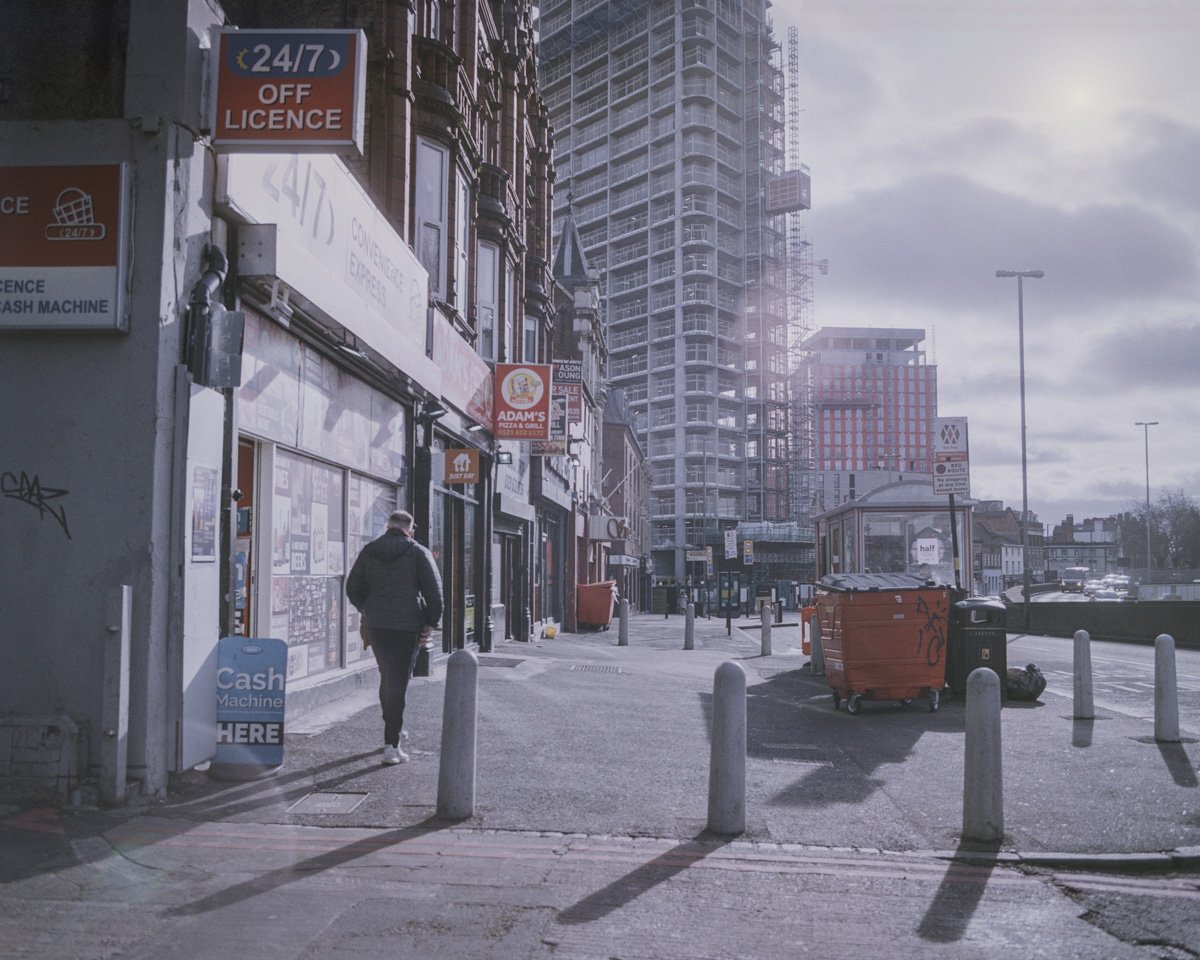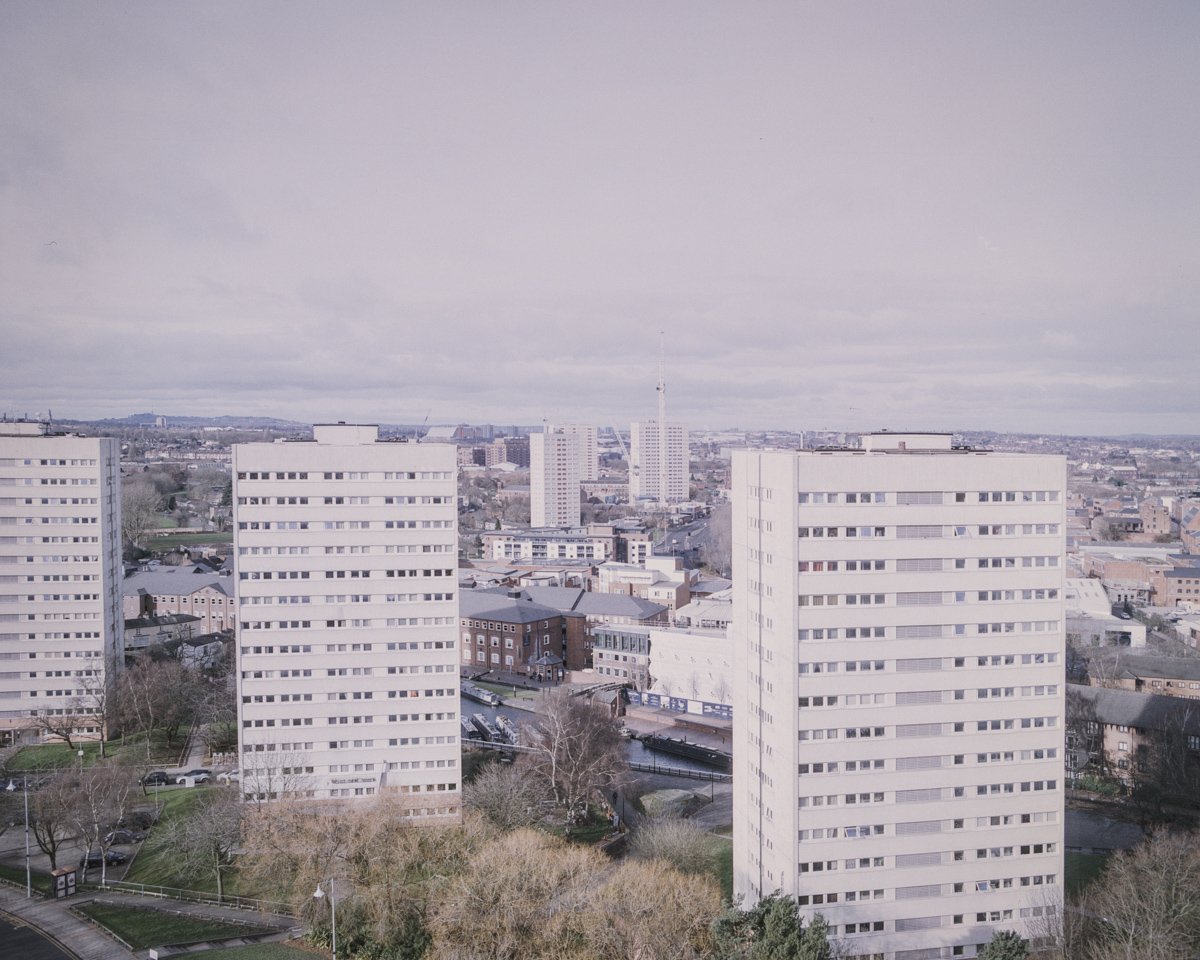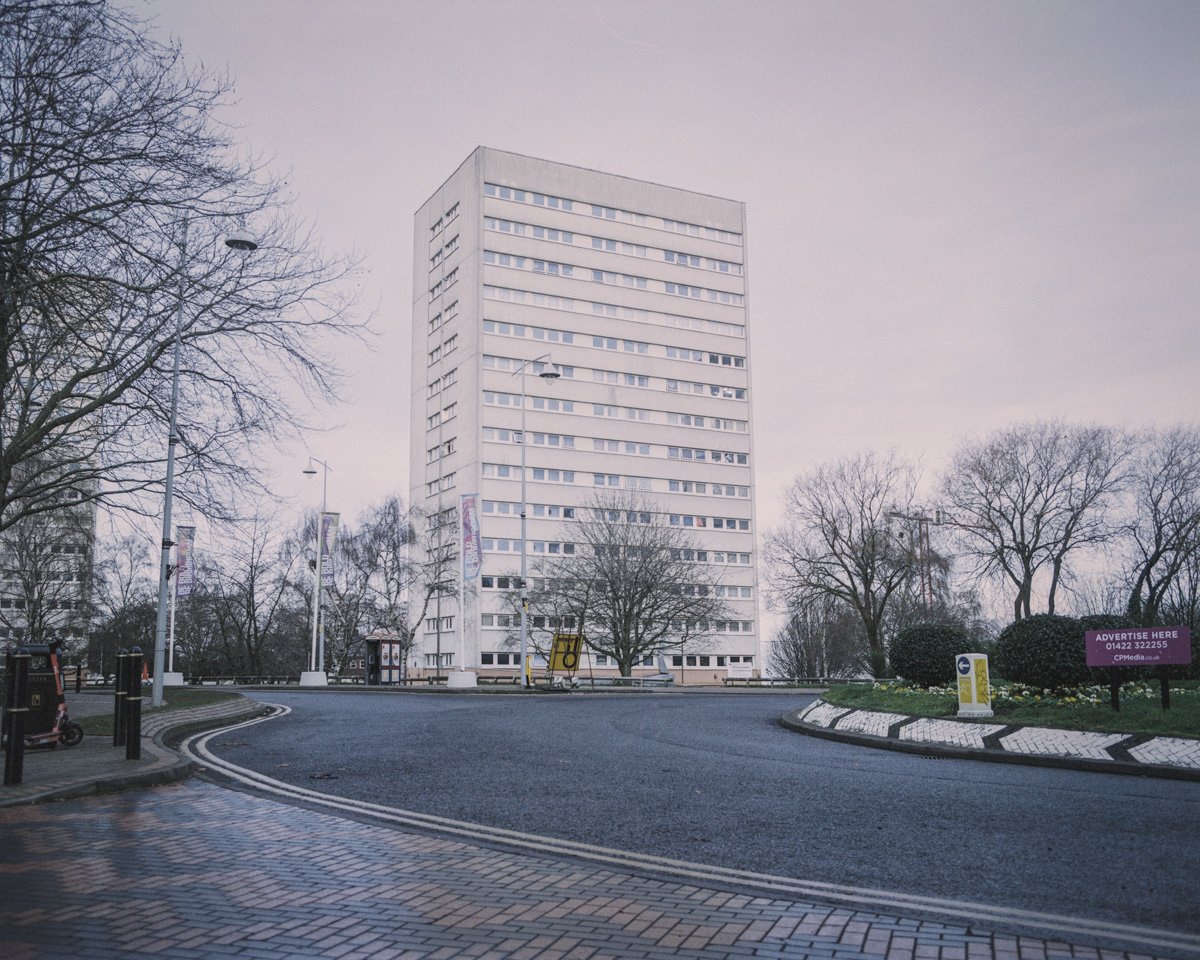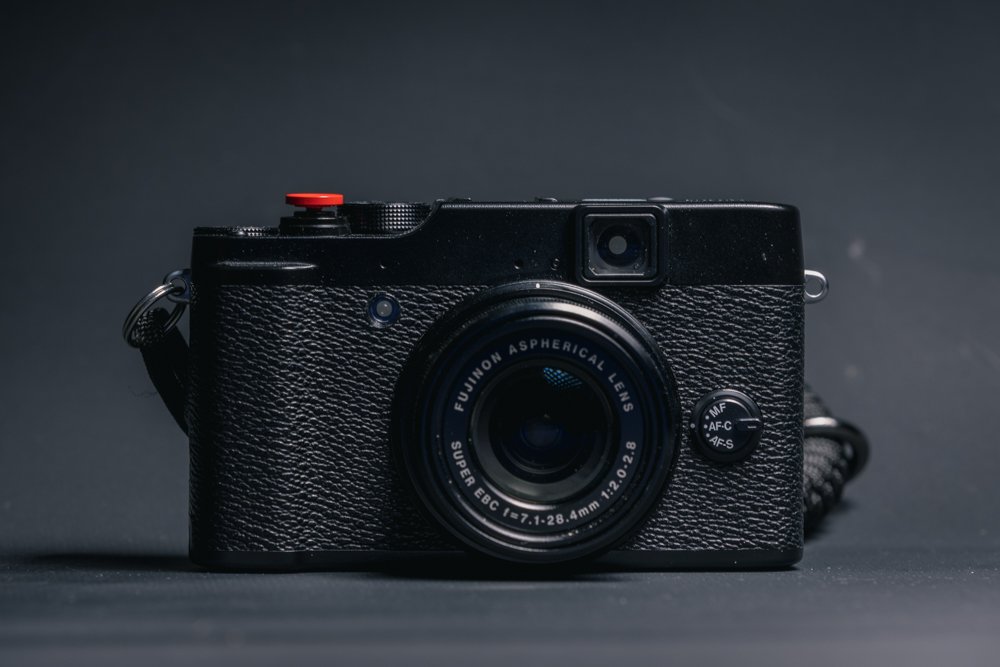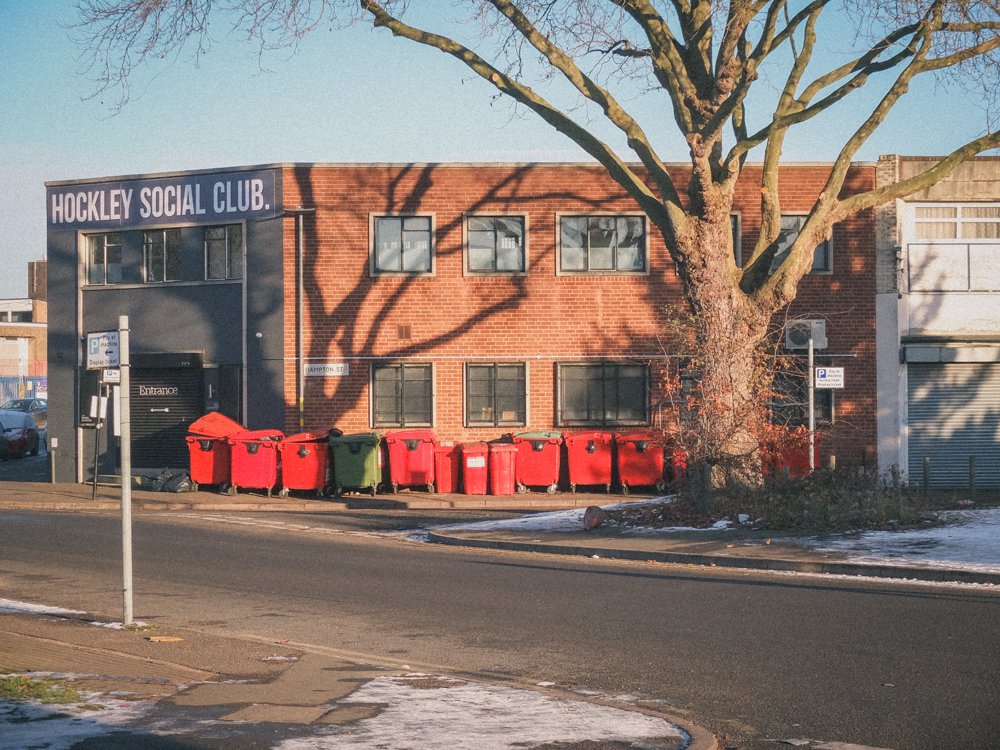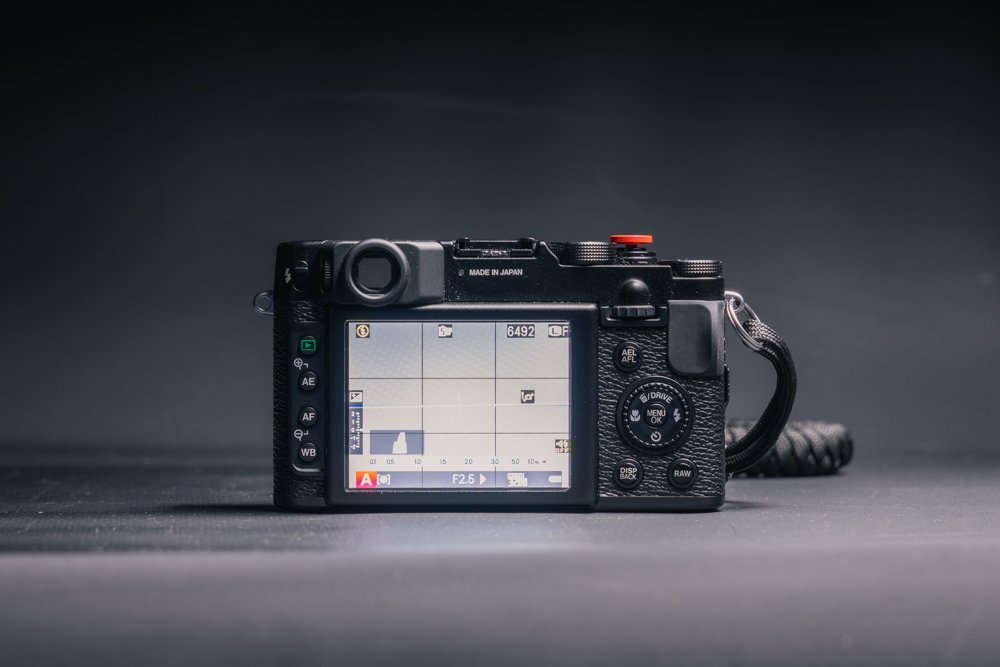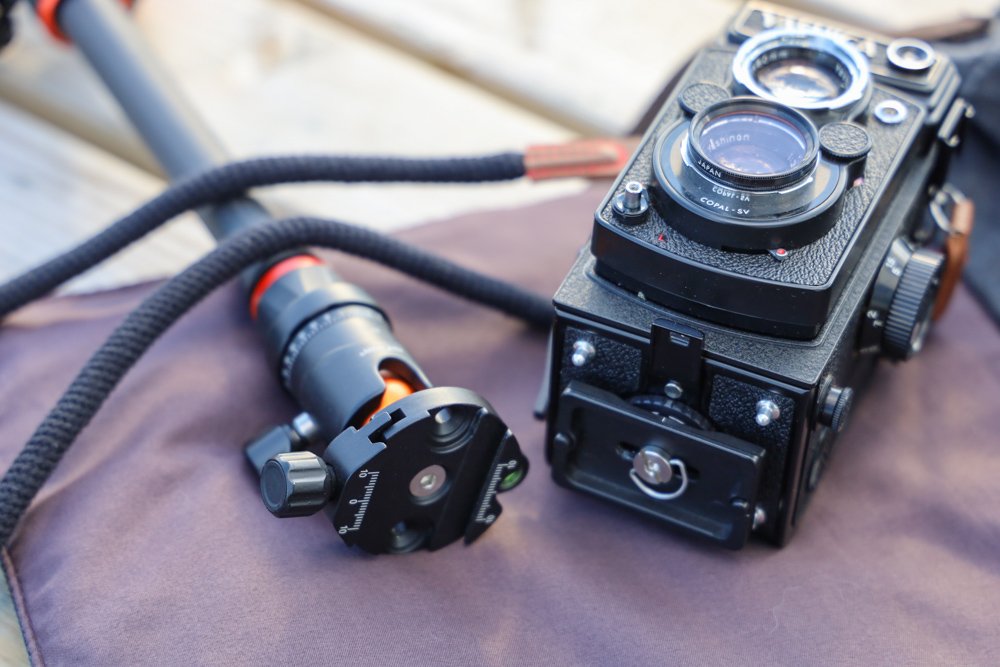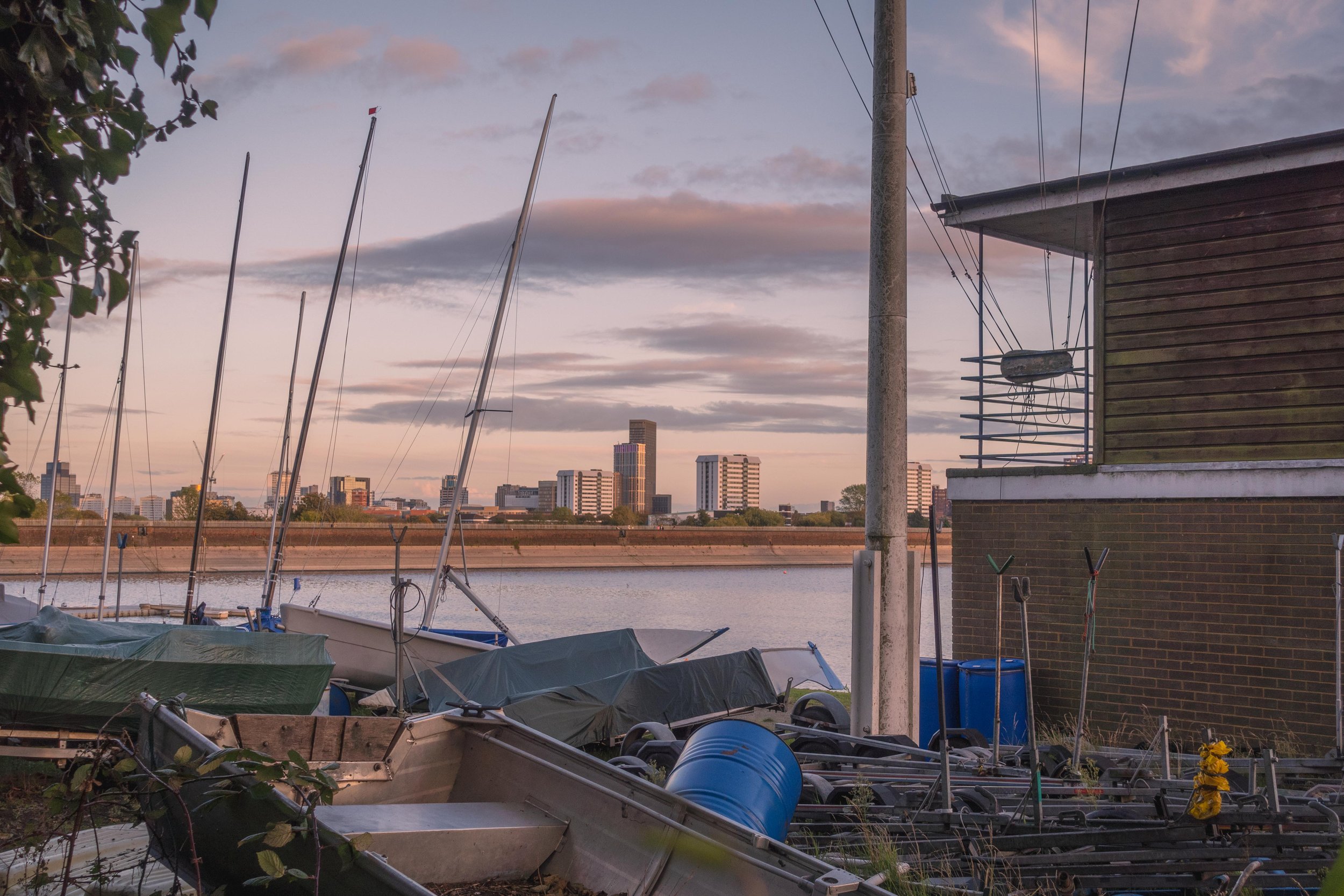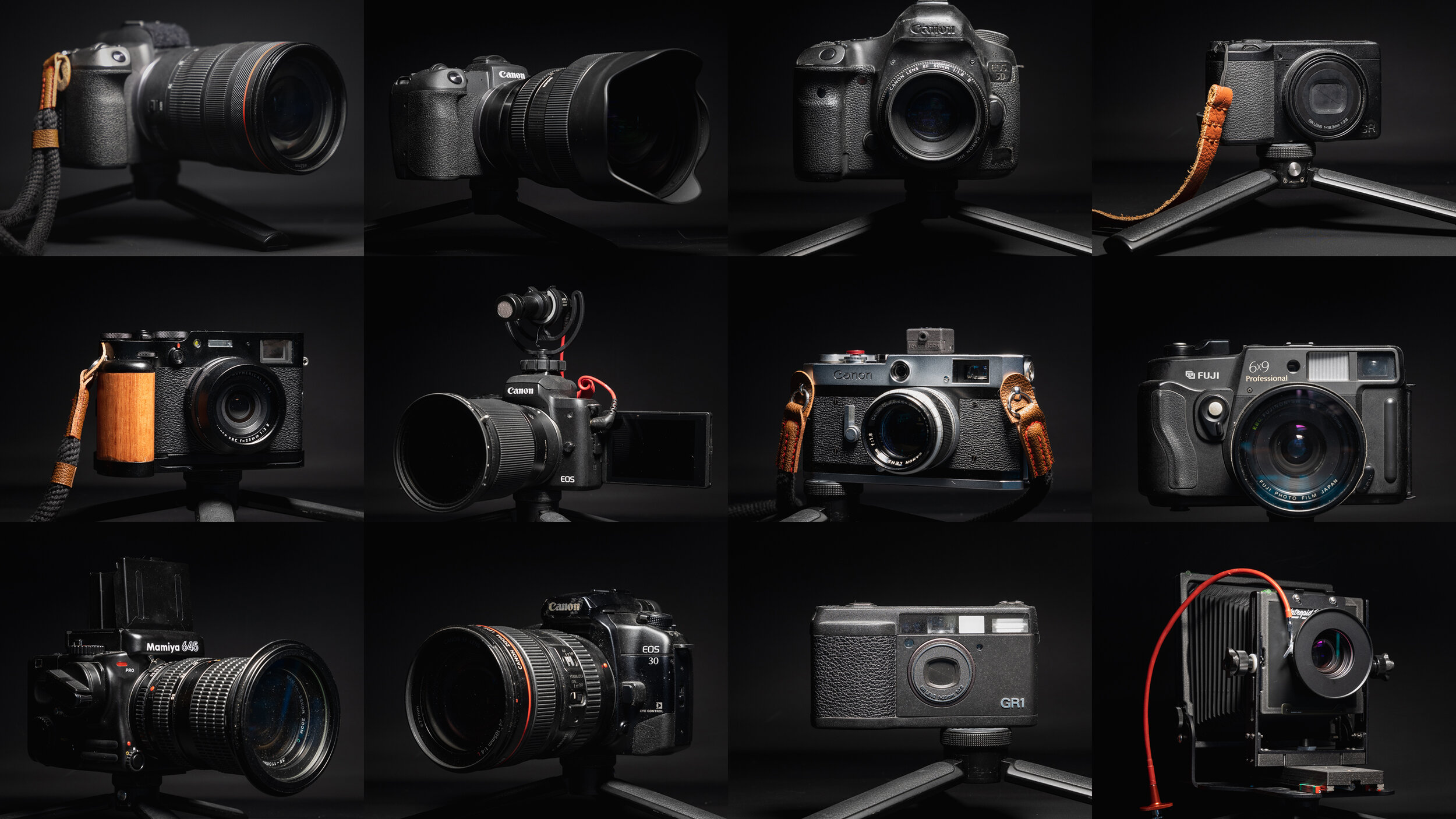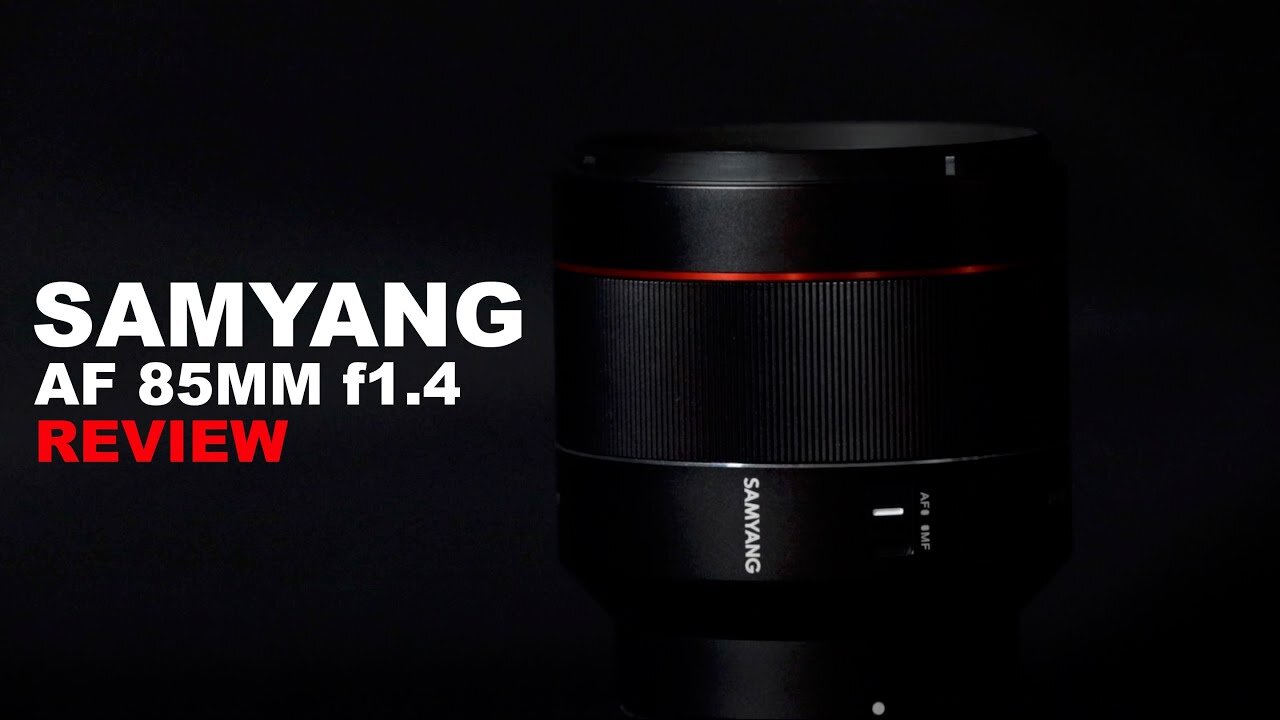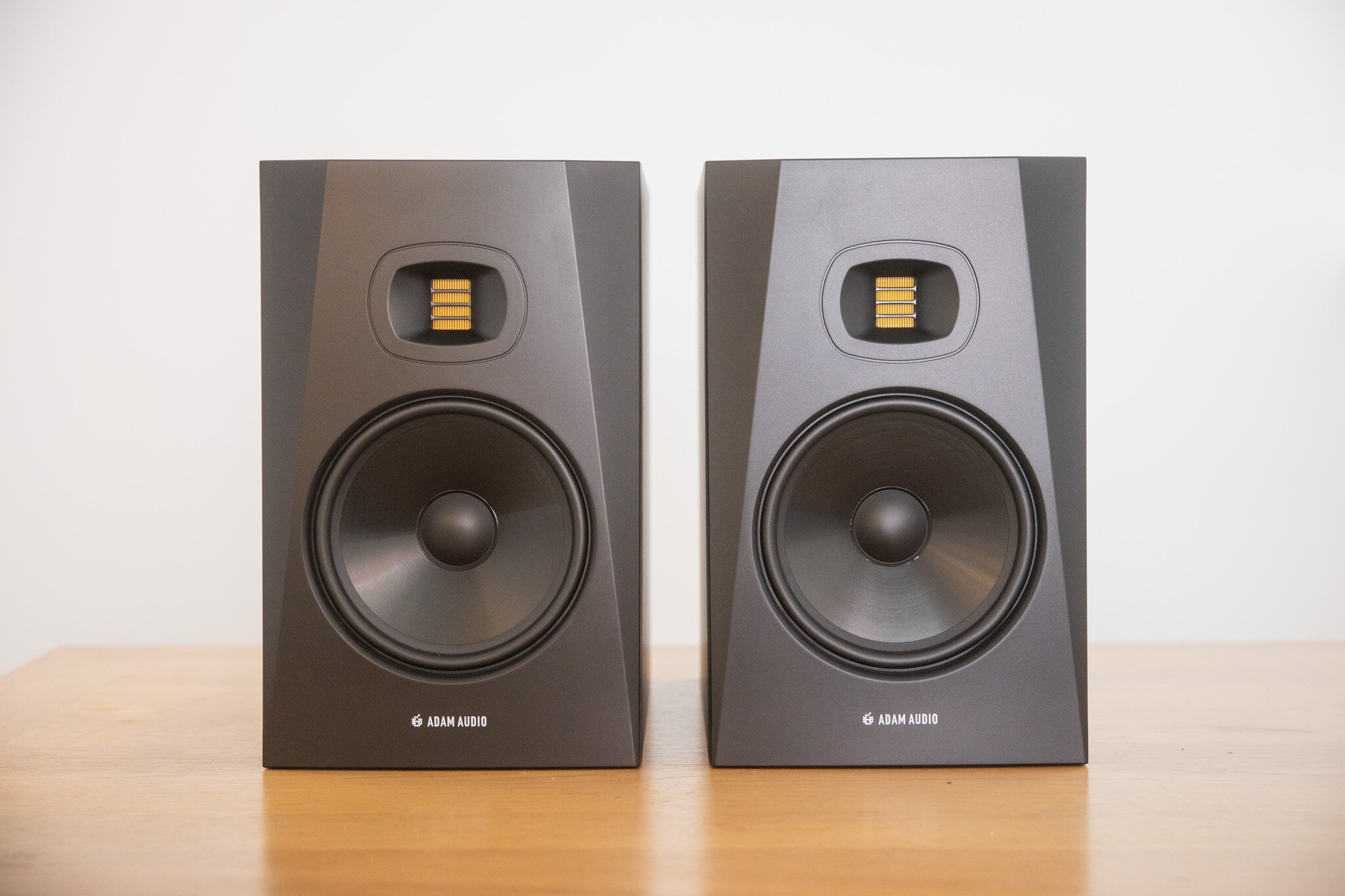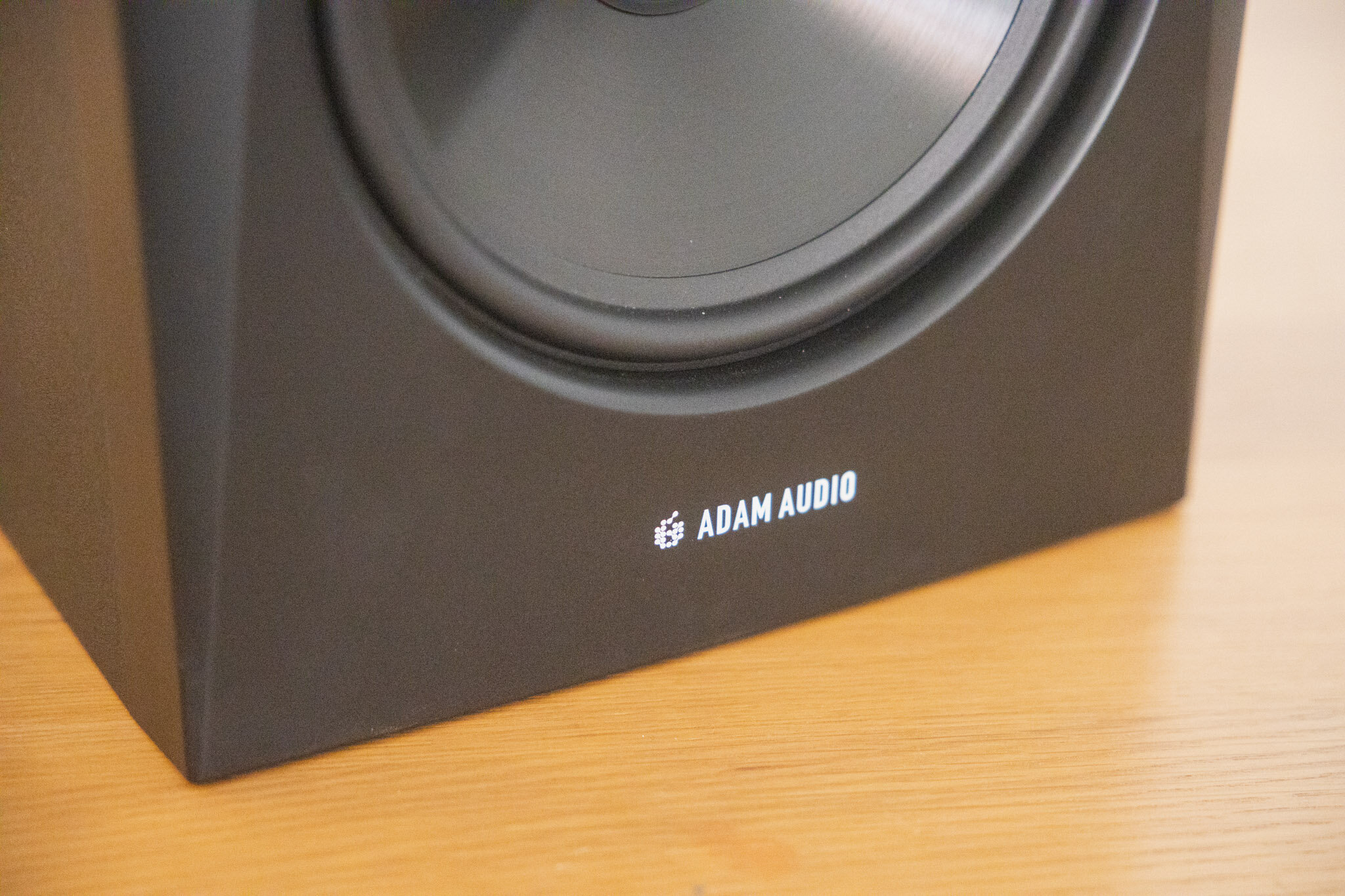Trying Three Lomography Films!
When it comes to film, I have a pretty simple palette. My ‘go-to’ film of choice has always been Portra 400. Recently, I’ve had a brief love affair with Fuji Pro 400H but falling in love with a discontinued film is a bad idea!
When it comes to film, I have a pretty simple palette. My ‘go-to’ film of choice has always been Portra 400. Recently, I’ve had a brief love affair with Fuji Pro 400H but falling in love with a discontinued film is a bad idea!
As you can probably tell from my Vanilla film choices (and Vanilla happens to be my favourite Ice Cream - my middle name is definitely not ‘Danger’!) I tend to keep things simple. Every now and then I might experiment with an expired film if I’m feeling particularly adventurous! However, in my instant hunt for reasonably priced film, I stumbled across Lomography.
If you’ve even stepped foot in the film world, you will have come across Lomography. Their dedication to analogue photography and commitment to quit is pretty much unmatched! Despite having a great range of affordable cameras to explore (I myself had a Dianna-F for many years and in part, it was that camera that got me back into shooting film!) they also have an amazing range of film!
PLEASE NOTE: I WAS SENT THESE ITEMS FOR REVIEW BUT NO OTHER PAYMENT OR CONTROL WAS EXCHANGED FOR PUBLISHING THIS UNBIASED REVIEW
My ‘typical’ film look and feel…
It was their more experimental offerings that got me interested though and after exploring the options, it was time for me to ‘Break Bad’ and ditch the Portra for something a. Little more exciting - I was going full Rum Raisin!
There were a couple of caveats, I pretty much only shoot Medium Format and it must be C41 development so that I could develop the film myself. Fortunately, Lomography had me covered with a great range of 120 colour negative film. The three I would be shooting with were Metropolis, Lomo Purple and Lomo 800.
“If you’ve even stepped foot in the film world, you will have come across Lomography.”
The only real stipulation that I put on myself was that I was going to shoot all of the films on the same camera and lens setup. It’s not that I would be drawing a direct comparison between the films, we’’re dealing with three very different beasts here! It was more to keep the process straightforward. So the Bronica GS-1 and 65mm lens were my weapons of choice!
My developing would all be done at home so your results with these films may very, but I tried to be as consistent in my approach as possible! That included editing the images - all images have only had a very light edit and I have tried to keep the colours/tones somewhat representative of how the film looks. The only slight caveat being the Lomo 800 were I did use a Black Pro Mist ¼ filter - just to soften the lights at night.
LOMOGRAPHY METROPOLIS
Metropolis is probably most famous for its muted, desaturated look with a good kick of contrast. As a Portra shooter, the desaturated look sounds like it should be right up my street. However, this was probably the film I was most suspicious of. I tend to go for warmer, more wholesome tones and this felt like it might be a little, dystopian…
However, when I saw the results, I was pretty impressed! This is probably more a reflection of my shooting style but the film renders a lot different to what I would normally go for. But it was a pleasant surprise and I could certainly see myself using it more often and certainly the kind of film that would be useful for certain projects or even entering photography competitions with a more urban feel!
I personally think it looks better when you have a bit of strong, directional light. If you shoot more urban scenes then this is certainly a great film for you. It has a little punch of colour that pops through and draws the viewer into the image. The contrast is great and gives it a gritty feel, without being too overdone.
As with all films, choosing what speed to shoot it at is really a personal choice. I shot this film at 200 to give the film a little extra light and I’m glad I did. That said, I also think this film would look cool and underexposed a little, it would certainly render shadows deep and black thanks to that strong, contrasty look.
LOMOGRAPHY LOMOCHROME PURPLE
OK, I’ll admit I had no idea what to expect from this film! I’d done a little bit of Googling to see what it was all about but didn’t think it would be my cup-o-tea! I was wrong, I loved how these images came out! But there was one big problem with this roll of film, me… Let me explain.
I used the same camera/lens combo for all the films I tried - the Bronica GS-1. Whilst I was loading the Purple - I noticed the film leader and distance to the ‘Start’ markers on the backing paper was quite short. As I wound the film on to get to ‘shot 1’ - I was convinced the film was not being collected by the pick-up spool!
I hastily opened the back of the camera (believing the film would still be unwound) only to find the film had been collected correctly and I’d just exposed the first shot - what an idiot… but it gets worse. When I close the film back, it obviously resets the shot counter as if it’s loading a new film!
I quickly applied a bit of logic and switched to multiple exposure mode (thinking this would move the film counter on but not advance the film) - again, I managed to mess that up and what’s the result of all this stupidity - I wasted about half the roll of I’ll! There is a price to pay for this level of stupidity and when you shoot film, that price can quickly add up!
However, I did manage to get a few shots on the roll and I’m glad I did because I love how this film looks! This is the answer to all of my 'Vanilla’ Portra shooting and is so far removed from my normal style! It really did put a smile on my face as I was scanning the negatives and seeing those bright, bold colours shine through!
I’ll admit, I’m sure this film won’t be for everybody and I certainly preferred the way it renders vegetation/sky rather than what it does in urban environments. However, it was great fun to shoot with and I wouldn’t hesitate in shooting with it again! Sure, you can adjust hue in Lightroom to get a similar look but where’s the fun in that and the one thing this film stuck is, is fun!
LOMOGRAPHY LOMO 800
So on a more serious level, this film is one that I was very excited to shoot with. Not because it has any weird or wonderful quirks but because it is probably most similar to a ‘standard’ colour negative film - albeit an 800 speed film. This film wouldn’t give me anything strange or peculiar, but if it was a decent alternative to Portra 800 then I’m here for it, as the kids say…
Shooting the film raised one important question - do I shoot in the day, or in the night. Obviously, ISO 800 lends itself to slightly lower light conditions but I thought I’d fire off at least one late afternoon shot, just to see how it does. I wish I’d shot a lot more in the daylight! I think this film looks awesome in a sunset/soft light scenario! The soft pastel tones, beautiful grain structure and slightly warm feel make this film ideal for these kinds of scenarios!
However, I’d banked on it being a film I could use at night and guess what, it excelled in that department too! The 800 speed meant that my exposures didn’t need to be super long! I overexposed by about a stop and the longest exposure I was getting (in normal shooting conditions) was around two seconds. For a couple of shots, I did choose intentionally to stop down a little and get a bit more movement in the light trails.
This film worked wonderfully in the dark and I’m very impressed by the results. My only slight concern is the warmer base tone that comes through - but this is obviously easily corrected in post. If I was to have another, very mild criticism of the film it’s that the negatives themselves felt a little bit thinner than normal and therefore, were prone to curling. I honestly don’t know if this is me being super sensitive or if most 800 speed films are like this, but it’s something to be mindful of.
That said, I would have no problem buying a whole bunch of this film as my go to low light option. More so, I would also buy a load to shoot in the day/dusk as I think this would be a fantastic option. I’ve often heard good things about Lomo 800 and I can say that I am a well paid-up, ticket holding member on that particular band-wagon!
MY FINAL THOUGHTS…
I had so much fun shooting these films. I have felt for a while that I need a change of speed with my film photography and shooting these stocks has highlighted that there is so much more to film photography than the old favourites! Would I use these films on a daily basis, possibly not but I can argue a good case for projects shot in each of these films and that is something that I’m sure I will do!
Lomography is more than just a retailer though and this is the message that I really wanted to get across. Brands like Lomography are at the heart of film photography and are opening up a world of possibilities to people like me and hopefully, you. From their cameras and films to their absolute enthusiasm about the community, it’s great to see brands not just trying to ‘sell’ us something, but genuinely caring about the people that matter, the creative process and the end results! Long live Lomography…
About the Author - Ross Jukes is a professional Photographer and Videographer with over a decade of experience. Working in both Digital and Analogue formats, Ross has worked with international clients, had his worked published numerous times and exhibited his work extensively. With a passion for all things photographic, Ross combines his experience, enthusiasm and dedication to his art form to create engaging and educational content for the photographic community.
Disclaimer: All links to Amazon UK are affiliated links - you will still pay the same price but I will receive a small commission for providing the link. All information provided in this blog is intended either for educational or entertainment purposes and is accurate to the best knowledge of the author. However, further research/professional advice should be sort before making purchases/implementing any advice given and no responsibility is taken by the author or parties mentioned here within.
My Top 10 Cameras of 2022!
As the year comes to an end, I thought it would be interesting to take a look at some of my favourite cameras that I have used in the last 12 months. I use a camera every day for work, but I also take a huge amount of pleasure from just picking up a camera and going for a walk.
my favourite cameras in 2022
As the year comes to an end, I thought it would be interesting to take a look at some of my favourite cameras that I have used in the last 12 months. I use a camera every day for work, but I also take a huge amount of pleasure from just picking up a camera and going for a walk. This means that cameras do different things for me, some are work horses for specific jobs, some are purely for the user experience!
As I shoot more and more film, I’ve learnt that I really enjoy the slower process. Taking time to compose images, check exposure and the mystery of how it will come out is thrilling. With this in mind, you can probably guess that if I could only use one camera, it would probably be film (and medium format at that!).
That said, I have had to upgrade my camera this year and the new ‘daily driver’ has been interesting to say the least! However, I have also found myself exploring digital cameras for everyday use and have been really enjoying the journey. Film prices have made it difficult to justify taking an analogue camera out every time so finding a digital camera with an analogue feel was essential! Let’s get into the list…
PLEASE NOTE: I PURCHASED ALL OF THESE ITEMS WITH MY OWN MOMEY AND NO PAYMENT OR CONTROL WAS EXCHANGED FOR PUBLISHING THIS UNBIASED REVIEW
10 - Koni Omega Rapid M
Coming in at ten but by no means a bad camera os the Koni Omega Rapid M. This was a bit of a random purchase for me and not really something I had spent a lot of time researching. The only thing that really stood out to me was the 6x7 aspect ratio. I knew that I was never going to afford a Mamya 7ii or the like so when I found out about the Koni, I was intrigued.
The Koni Omega Rapid M is capable of some really sharp images
However, when I saw the prices, I was immediately sold on the idea. Coming in at a fraction of the prices of the trendy Mamiya, it almost seemed silly not to at least give it a go. My major concern was finding a decent example. My eBay searches were mainly bringing up cameras located in Japan. I wasn’t concerned about importing one but as luck would have it, one popped up in the UK and I quickly snapped it up!
The camera is simple to use (with one of the coolest shutter advances I’ve ever seen - imagine cocking some kind of vintage gun!). The ergonomics of the camera are not great, it’s bulky, heavy and a bit of a pain to carry around. However, the results are fantastic and certainly make me wonder why anyone would spend more for the Mamiya (apart form maybe the weight and user experience!).
9 - Fuji X10
Next up is a very recent purchase and I’ve recently posted a review about this camera, so I won’t go into too much detail here. The more I use it though, the more I enjoy it. This little camera fits so well in a pocket and for me, the results are certainly good enough that it justifies living in my pocket.
Need I say more about the little Fuji X10?
Possibly my biggest wish for this camera would be the low light performance. Whereas it is perfectly capable of getting a good image in darker conditions, it takes work. Given the age of the camera though, I really am nitpicking and this is a great little camera to use in most other circumstances.
8 - Fuji X100V
For many, seeing the mighty X100V languishing down in eighth might seem completely foolish. However, I have really had to try to love this camera. It is probably the closest thing to the perfect pocket camera out there in 2022. However, my main gripe is it’s barely pocketable!
The Fuji X100V can produced super rich and vibrant images
I love the images that can be had from this camera and the looks, ergonomics and user experience are all fantastic. Trying to fit it in a pocket is not such a good experience. In the winter months, when big coats are a must, it’s a great camera to carry. In the summer though, if you’re going out in jeans and a T-shirt, you’re going to need to bring a bag!
7 - Canon Eos R
Many people may assume I’ve completely lost my mind to see the Eos R even on the list, let alone ahead of the X100V. However, this camera has been a complete workhorse for me and even though it may not be my ‘main’ camera anymore, it still makes for a fantastic second camera.
The Canon Eos R once again proving why I can’t let it go…
When it was released, the ‘R’ got a lukewarm reception to say the least. For me, the ergonomics are great, it’s reliable in most circumstances and my style of work, the results are more than acceptable. With decent video quality and a pretty snappy autofocus system, this camera has been rocksolid and still earns a place in my camera bag.
6 - Yashica Mat 124 G
The Yashica Mat 124 G is a pretty legendary camera. An affordable alternative to the Rollei counterparts, this is a common starting point for the entry to the world of TLR’s. I picked up a very clean example at auction and even at the time, I knew I was paying over the odds but I’m glad I did!
The Yashica Mat 124 G is a much loved camera for a reason…
It’s a super simple camera to use and TLR’s by their very nature are just a joy to use! I’ve had so much fun using this camera and produced some of my favourite images from this year on it. If you’re in the market for a TLR and find a good example at the right prices, I wouldn’t think twice about grabbing one!
5 - Canon P Rangefinder
The Canon P was probably the 35mm camera that really got me interested in analogue photography, I think the camera is beautiful and is an absolute joy to use! I can’t really compare this to the Leica alternatives but considering you’ll be paying over ten times more for a Leica, I’m certainly happy with the P!
The Canon P Rangefinder is such a funny camera to carry…
The biggest downside of the P for me personally is that it’s not medium format. I simply prefer the image quality and detail from the larger negative and I would almost always pick up one of the bigger cameras over the P every time. It’s such a shame though as this is a beautiful camera and I would absolutely recommend it if you’re not interested in film size!
4 - Mamiya 645 Pro TL
Ok, so this camera being so high up on the list is quite a surprise to me! It’s a great camera and having owned the ‘Pro’ - I picked up a ‘Pro TL’ as it was such a good deal! However, the 645 negative size never really did it for me and I found myself leaning towards other cameras.
The Mamiya 645 Pro TL can produce images to rival almost any medium format camera…
That was until film prices went through the roof in 2022 and I have to admit, I’ve found myself using this camera more and more. It’s a fantastically versatile camera and produces great results. I always class it as more of an ‘entry level’ medium format camera but I admit, that’s complete rubbish - this is a very capable camera one that I will be shooting with more next year!
3 - Leica M8
OK, so I admit that this camera was a complete indulgence and you can find out more about it in my first impressions. That said, I absolutely love this camera and once you get past the price tag, it actually suits many of my wishes from a camera! The shooting experience is great, it feels solid in the hand and the results that you can get from it are incredible.
The Leica M8 has a truly ‘film’ camera feel with most of the benefits of digital…
Obviously, it’s completely perfect. It’s practically useless in anything other than good light and can feel a bit chunky at times (though that is the ‘classic’ Leica feel). More concerning though is the potential for weird artifacts in the image and knowing that the M9 had a bit of a sensor issue, it’s always nagging in the back of my mind that it could just die!
2 - Canon R5C
Right, so this is the big one! This is the camera that I upgraded too and I’m so glad that I did. I will be doing a review of it but needless to say, I love this camera. The results that you can achieve from this thing (both in photo and video) completely justify the hefty price tag!
The Canon R5C is a remarkable camera and I will do a full review soon…
However, this is a complete ‘tool’ and it is only used that way. In fact, I don’t think I’ve take it out once to shoot for pleasure. The main reason being that this camera is not one camera, it’s two! It has two separate operating systems for photo and video. The ergonomics for a photo camera are not the greatest and there are a few cameras I would rather pick up ahead of this.
With all that said though, this is a fantastic camera though and hasn’t missed a beat when it comes to commercial work. In an ideal world, I would probably have separate photo and video cameras but with all the features this camera packs in, I’d be spending a lot more money for that privilege!
1 - Bronica GS-1
Well, this is quite the turn up for the books… I spent a long time looking at the Mamiya RB67 and the Pentax 67 to fulfill my six by seven desires. The more research I did, I kept coming across the ‘underrated’ Bronica GS-1. According to all of the reviews, the size, weight and usability of the ‘Bronnie’ were all better than the aforementioned options!
The Bronica GS-1 is a special camera and I will do a full write up very soon!
However, having now used all three, I can honestly say I am happy with my choice and I absolutely love this camera! The waist level viewfinder is beautifully clear, the shooting experience is a pleasure and I can walk around with this camera all day and not feel too concerned about weight!
The thing that really got me though are the results that can be had with this camera! I have picked up a few lenses and keep finding myself gravitating back to the 100mm. Given the choice of all the cameras I own, this is the one that I would be picking up if I could only use one camera!
So there you have it, that’s pretty much my year in cameras and unless anything major happens, these are the ones I will be using the most in 2023 as well! I’d love to hear your thoughts on the list though and what would you pick? Happy shooting in 2023!
Disclaimer: All links to Amazon UK are affiliated links - you will still pay the same price but I will receive a small commission for providing the link. All information provided in this blog is intended either for educational or entertainment purposes and is accurate to the best knowledge of the author. However, further research/professional advice should be sort before making purchases/implementing any advice given and no responsibility is taken by the author or parties mentioned here within.
Fuji X10 Review - Best Alternative to the X100V?
The purpose of a small, compact camera is that it can go everywhere with and the X10 makes for a great companion. So would I recommend it, absolutely. I think as long as you have the patience to use it, the know how to work with the camera to get the best results and modest expectations for the final output, then this is a dream of a camera.
Small but beautifully formed…
If you’ve seen any of my gear related blog posts, you’ll probably have noticed two things. Firstly, I love trying new camera gear. Secondly, I’ve still not found the perfect camera for me! Even though I class myself as a ‘Birmingham Photographer’ I need something small enough for travel but reliable enough to produce good images in most situations, without need to take my full camera kit! A tough ask for a small camera…
I recently wrote about the Leica M8 which is certainly a great camera, though price, sensor problems and poor low-light performance mean that it is far more for ‘fun’ than business!
PLEASE NOTE: I PURCHASED THIS WITH MY OWN MOMEY AND NO PAYMENT OR CONTROL WAS EXCHANGED FOR PUBLISHING THIS UNBIASED REVIEW
Watch my latest video where I give an in-depth review of the X10 in 2025!
However, the camera that has come closest to meeting my needs of a small, fun to use camera that produces print worthy results is the Fujifilm X100V. There has been a lot of interest in this camera of late and due to a perfect storm of social media praise and stock shortages - the X100V has become a rare and sought after commodity in the camera world.
This has also caused another, more worrying issue. Prices have absolutely skyrocketed for the little gem and some unscrupulous people seem to be charging way more that the cameras original RRP in a bid to make a chunky profit out of wannabe ‘V’ owners!
This has (rightly) left many people scratching around for alternatives. Though there are plenty of great cameras out there, many people want beautiful Fuji images with… well, the Fuji street-cred!
The easy suggestion at this point would be to go with the Fuji X100F - the V’s predecessor and a fantastic camera that I reviewed myself many years ago, and fell in love with almost instantly!
Once again though, some of those pesky camera dealers have slowly started to inflate the price of the ‘F’ as demand for some Fuji fun times has reached fever pitch! As before this simply prices many of us out of the market with no chance of getting in on the action.
So what is the answer? Well, maybe not the complete answer, but certainly an interesting proposal is the Fujifilm X10 - a somewhat hidden gem from way back in 2011 and gues what, I bought one!
First Impressions...
I spent a little while hunting eBay for a good deal and at around £150 for a camera, battery, charger and a couple of little ad-ons, I think I got a reasonable deal. Average prices seem to be around £225-£250 though as with everything, that will depend on the condition of the camera.
When the package arrived, I hurriedly dived into the box and got my hands on the little beauty, and it is a little beauty! The lineage of the Fujifilm ‘X’ range is very apparent with it’s traditional rangefinder stylings and well throughout layout.
One of the ‘big’ surprises for me was that it’s a fair bit smaller than an X100V - understandably so as it’s not packing anywhere near the tech and features of it’s modern counterpart. However, as one of my most disliked things about the ‘V’ is it’s size (calling it pocketable is a stretch - literally in jean pockets!) I was really delighted at the smaller form factor.
“One of the ‘big’ surprises for me was that it’s a fair bit smaller than an X100V.”
The next shocker for me was the lens, a short telephoto 28-112mm equivalent (on it’s two-thirds sensor, roughly 12 megapixel). More so, you actually twist the lens to extend it from the body which also turns the camera on & off - very snazzy!
Build quality and button layout are all very satisfactory and even in my quite large hands, the ergonomics feel good and in no way ‘clumsy’. However, I have added a soft shutter release button and wrist strap for a bit of extra confidence when handling the camera.
The LCD is bright & clear and images seem to pop off the screen with it’s vivid colours. The optical viewfinder is a little underwhelming. It is clear but i’ve personally had some issues with setting the diopter. Another major flaw is that the extended lens will block roughly 15% of the bottom right when viewed through the finder. This itself is not a major issue, in particular if you’ve used many other rangefinders - but something to be aware of.
Protect those highlights, they’re difficult to recover!
Overall, I found the camera very satisfying to handle and the build seems robust enough. One drawback is the lack of weather sealing but this camera is more for casual use than serious photography, in my opinion.
IMAGE QUALITY...
Whenever you are using a camera more than ten years old with a mere 12 megapixels, you probably have to take the result with a grain or two of salt! In the X10’s case, I would dare anyone to be anything other than impressed by what this little camera could do!
From my first test images, I instantly fell in love with the vivid, sharp images that can be gained from this lens/sensor combo. In good light, the images are beautiful and with a bit of patience, you can get some fantastic results!
With a camera this age, some expectation setting needs to be done in terms of dynamic range and one thing that I found was highlight retention was not great. Shadow detail can be pushed a little but protecting highlights seemed to be the way to go!
Low light was my next major concern! I like to have a camera on me at night and if the little X10 could handle the dark stuff, it may find a permanent place in my coat pocket! Well, it didn’t do a bad job! With a little coaxing (and watching for slower shutter speeds!) you can achieve some more than satisfactory results!
As ever, you are probably better suited using a tripod/shutter release at night (which I’m yet to try with this camera) but by doing so, you lose the portability and convenience of a pocket camera. If you need a tripod etc. then you’re better suited just using a larger camera in general.
Focussing was pretty responsive and even at night, as long as you have a bit of contrast in the scene, it didn’t really seem to struggle. However, I wouldn’t class this a particular quick camera to use and for anything fast-paced (sports/wildlife etc.) you may struggle.
The DOWNSIDES...
So, in my constant hunt for the perfect camera, I knew that this little gem couldn’t be 100% perfect and alas, it’s not. Whereas the image quality is great and certainly gives a slightly film-like vibe - the quality is still somewhat lacking behind the ‘V’ - which is perfectly acceptable given the age/spec difference.
For me, I love the images it produces but then again, I would rather pick up a film camera over a digital camera for all but commercial use so ‘pure’ quality is not the highest concern for me.
Next is an issue that I can’t seem to find a satisfactory answer to. My X10 is incredibly slow to ‘boot’. When I turn it on, the LCD fires up but it takes around 10 seconds for the focus system/LCD info to actually appear on the screen.
Low light can be a challenge, but it can work!
I’m yet to find out if this is a common issue or if a firmware update/new SD card might resolve it. However, if you are a street shooter and you want to quickly capture a moment - it may turn out to be incredibly frustrating!
Update - I’ve since changed SD card and this has help boot times significantly but I’m still unsure as to why this happened in the first place?
Finally, that lack of weather sealing and not the most robust raw files make this camera a definite ‘maybe’ for most shooters. If you can look past some of these minor issues, it’s still a very decent little camera.
CONCLUSION...
I started this review by drawing a comparison to the X100V. I think that is maybe stretching things a little and the two are more similar in styling than any practical function. That said, would I consider this a serious alternative to the ‘V’ - yes…
Those colours though…
Sure, it’s age and somewhat modest specs mean that you shouldn’t expect to get anywhere near the image quality from the X10 as what you would the V. However, can you get a decent image, absolutely. Does the camera handle well, indeed it does. Does it look super cool when you whip it out in the street - well you’ll be beating off photo nerds with a monopod, so it’s definitely a looker!
Video Source - Riley Photos via YouTube
I thoroughly enjoy using this little camera and as mentioned before, it will be living in my pocket for the foreseeable future. As an X100V owner, I find it remarkable that I’ve been reaching for the little X10 over it’s bigger, better brother.
For the most part, that’s simply due to the V’s size - I just don’t find it convenient enough to carry unless I’m taking a bag out with me. There lies the problem, if I’m taking a bag, I’m far more inclined to reach for a film camera and then it becomes a dedicated event.
The purpose of a small, compact camera is that it can go everywhere with and the X10 makes for a great companion. So would I recommend it, absolutely. I think as long as you have the patience to use it, the know how to work with the camera to get the best results and modest expectations for the final output, then this is a dream of a camera. Happy shooting :)
Disclaimer: All links to Amazon UK are affiliated links - you will still pay the same price but I will receive a small commission for providing the link. All information provided in this blog is intended either for educational or entertainment purposes and is accurate to the best knowledge of the author. However, further research/professional advice should be sort before making purchases/implementing any advice given and no responsibility is taken by the author or parties mentioned here within.
Leica M8 - My First Impressions...
I'm not going to justify this camera as anything other than a very, very expensive indulgence. For the same money I could buy a modern offering from Canon or Sony that would blow the M8 out of the water in every single department. But that's no the point here. This camera is as much about the process as it is the somewhat sketchy results.
Finding the Perfect Camera
For the last few years, I have been on the hunt for the perfect camera. I have a pretty simple criteria, it must be small, fun to use and produce stunning images! Easy enough then, right?
Watch the video for my thoughts on the Leica M8 in 2024!
Well judging by my purchase history, I have been struggling. That was, until I came across a video from the excellent One Month, Two Cameras (Ali) - a channel seemingly dedicated to the exact struggle of finding the perfect camera.
PLEASE NOTE: I PURCHASED THIS WITH MY OWN MOMEY AND NO PAYMENT OR CONTROL WAS EXCHANGED FOR PUBLISHING THIS UNBIASED REVIEW
Video Source - One Month Two Cameras via YouTube
Ali superbly explains why the Leica M8 is her (almost) perfect camera and it had me hooked. I just had the small task of raising the funds and hunting down a good condition M8. Over the coming weeks, I sold a bunch of cameras that simply were not being used and then trawled the internet for a good condition M8.
Grey days in Birmingham are a challenge for any camera…
Leica M8 making all trees look Autumnal…
Finally, I stumbled across a great condition M8 on MPB - a site dedicated to secondhand camera sales. At £1250, the little Leica was a little more than I'd planned to spend but it seemed to be around the average so I plucked up the courage and pulled the trigger! A few days later, I was in the Leica club and ready to go shoot!
First Impressions...
I was super excited to get the camera out of the box and my first thought when I picked the camera up was 'this thing is heavy!' Not so heavy that it's uncomfortable, far from it but it's definitely got some heft to it! It feels solid and all dials and buttons have a reassuring sturdiness to them.
The body itself is very simple. It has the unmistakable Leica shape. The shut release and shutter speed dial and perfectly located on the top plate. There is a small but very useful LED display on the top for shots remaining and battery life, two delicate subjects that we'll talk more about later.
“The body itself is very simple. It has the unmistakable Leica shape.”
On the rear of the camera, there is a small and underwhelming LCD screen (keep in mind this is a camera from 2006!). Next to the screen is a small d-pad for navigating the menu. On the bottom of the camera is the familiar Leica style plate that must be removed to access the battery and SD card slot.
I quickly grabbed a Canon 50mm lens and an adapter so that it would fit my new Leica and started grabbing shots. The first thing I noticed was the big, bright viewfinder. I'm pretty familiar with using rangefinder cameras these days and this is the best viewfinder I've used by some distance. The frame-lines are clearly visible and accurate. The rangefinder patch itself is bright and contrasty enough to make focussing simple.
I fired shot after shot (mostly of the cat!) and instantly fell in love with the sound of the shutter. It is not discreet! It has a significant clunk to it which more than satisfies my 'digital camera that feels like a film camera' needs. In fact, short of a manual advance lever (and maybe scrapping the LCD screen etc) this camera basically feels like a Leica M6 - one of the most coveted 35mm film cameras out there.
A Rocky Start...
It's safe to say that my first impressions were overwhelmingly positive. I quickly bagged up my new baby and hit the streets. I was keen to see what the real world performance of the camera was and to overcome some of the issues I knew that I was going to have, and they were some biggies!
I knew going into this purchase that there were two main problems that the M8 had. Firstly, there is basically no Infra-red filter on the camera. This helps keep images sharp, and they are! But it also does funny things to the colours. Greens take on a yellowy burnt kind of look and synthetic blacks just come out purple.
This caused such an uproar on release that Leica had to send out IR Cut filters to all new owners to overcome the issue. I thought I could live with it. I very quickly realised I couldn't and a costly filter would need to be purchased. This was an easy fix, the next issue was not so simple to overcome.
This camera, as with many of its age is just not great in low light. I really wanted to be pleasantly surprised and in certain circumstances, I was. But it's safe to say that shooting at anything past dusk can have major limitations. More worryingly, the sensor is prone to some very strange artifacting - more-so in low light. I thought it might be infrequent, but already I was seeing some worrying signs.
The Sensor...
Now is probably as good of a time to talk about this cameras major strength, but also its biggest weakness. The sensor is an ASP-H size CCD sensor from Kodak. What does this mean? It has great colours. In the most simple sensor, the colours out of this camera have a very film like feel that nostalgia junkie like me go crazy for. This comes at a cost though.
That’s a worry from the M8 :(
Apart from low light performance not being great, there is also the small issue of this sensor just doing really strange things with no real indication of when it's going to happen. This makes it very difficult to account for. It seems more prominent in low light conditions but also scenes with difficult contrast. Either way, it is a major flaw.
Low light can be a challenge, but it can work!
It's important to remember that this is a 10-megapixel camera from 2006. Setting expectations is key to building a relationship with this camera. That £1250 price tag does make it a pretty difficult pill to swallow when you are not 100% sure that your image will come out clean or not. As a film shooter, this level of disappointment is something I've learnt to live with.
Getting to grips with it...
With some of the major issues out of the way, it's safe to say this camera is a beauty to use. One of the only potential issues I would note is the camera can be a bit difficult to carry. I have added a wrist strap and have ordered a grip for the camera. For such a costly camera, I thought it best to add something a bit more grippy!
Those colours though…
Talking of additions, the other 'elephant in the room' is lens choice. It won't come as any surprise that Leica glass is just as expensive as the Leica bodies. With that in mind, I wanted a wider field of view than what the Canon 50mm was giving me (with it's 1.33x crop on the ASP-H sensor, this feels more like 66mm). After some research, a happy middle ground of cost and performance was the Voigtlander 28mm Ultron Type II.
I've been really impressed with this little lens and will do a separate review soon. It's important to remember when getting into a system like this, there will always been things you need to add. I'm sure this lens will be the first of many additional items and IR Cut filters to go with any additional new lenses - this could get costly.
Video Source - Mattia Burling via YouTube
Final Thoughts...
I will do a full review in the near future but its pretty safe to say that I am very happy with the Leica M8. I've been really pleased with the files coming out of this camera. The images are sharp with great colours and enough of a vintage feel to them to satisfy my film-shooter tendencies.
The handling of this camera is great. It feels like a film camera and if it had a manual advance (like the Epson RD-1) it would be almost the perfect middle ground between film and digital! If nothing else though, it looks great and certainly turns heads when you're using it in the street - you may want to make sure it is insured!
This camera is not for everyone though. It pays to think of it as a film camera as it involves a lot of manual intervention to get good image out of it. You will definitely need to be present in the photography process and it is not a simple 'set and forget' shooting style. When it hits though, when the light is just right and plays ball, it is fantastic.
I'm not going to justify this camera as anything other than a very, very expensive indulgence. For the same money I could buy a modern offering from Canon or Sony that would blow the M8 out of the water in every single department. But that's no the point here. This camera is as much about the process as it is the somewhat sketchy results.
Obligatory mirror-selfie… Sorry…
All-in-all, I already love this camera! If you have been looking at one to purchase for yourself and you’re on the fence (and can afford it!) Do it! You’ll certainly have a lot of fun with it. It has some major flaws, but if you can look beyond the potential downsides, this is an amazing way into the world of Leica! Be warned, it’s a bad habit to get into though! :)
Disclaimer: All links to Amazon UK are affiliated links - you will still pay the same price but I will receive a small commission for providing the link. All information provided in this blog is intended either for educational or entertainment purposes and is accurate to the best knowledge of the author. However, further research/professional advice should be sort before making purchases/implementing any advice given and no responsibility is taken by the author or parties mentioned here within.
K&F Concept Tripod - The little tripod that can!
I have been in the market for a small, lightweight tripod for some time now and after trying a few different options, nothing seemed to be working for me. So when I received an email completely out of the blue, from K&F Concept asking if i would like to try one of their tripods, I jumped at the chance!
I have been in the market for a small, lightweight tripod for some time now and after trying a few different options, nothing seemed to be working for me. So when I received an email completely out of the blue, from K&F Concept asking if i would like to try one of their tripods, I jumped at the chance!
I’ve long been a fan of K&F Concept as a brand and had used their filters in the past. So I was very excited when the tripod arrived and as with all of their products, it was nicely packaged. I quickly unwrapped it and the first thing that struck me was how light the tripod was, it barely felt like i was holding anything - but more on the specs later!
“If you’re looking for a small, lightweight travel tripod that’s well built and versatille, they really don’t get much better than this”
WHAT’S IN THE BOX…
For a small, budget friendly tripod - K&F very generously provide you with a sleek bag to transport your tripod in, which is a great addition. Another bonus for me was that the tripod includes a ball-head, so no additional costs there and and Arca-Swiss style mounting plate, which matched my setup perfectly so that I could just leave the plate on my camera and use it on any of my tripods.
SIZE & WEIGHT
The tripod is very compact and is comparable to a 1 litre drinks bottle in it’s folded down state. One thing that always puts me off small tripods is that when they are folded down, they sometimes have awkward parts sticking out that can make it difficult to transport them. however, K&F have clearly put a lot of thought into how well it can be transported and I’m pleased to say, it folds down very compact and easy to handle.
Equally, there are no concerns on the weight front. I’m use to carrying a large tripod with a big geared head and it very quickly becomes a chore on long hikes! It was a genuine relief to be able to carry something that is barely noticeable that can be attached easily to the side of a bag or if you have enough space, inside a bag itself!
BUILD QUALITY
One thing that I have found with smaller tripods is that there is always a compromise when it comes to weight vs build quality. However, I’m pleased to say that this thing feels tough! The locking mechanisms all feel solid and the ball-head seems to stay in position with no movement, even at angles where I thought the weight of a camera might cause it a few problems. More importantly, the images that I have captured when using the tripod have all been sharp with no signs of movement of micro-jitters!
One thing to keep in mind is that this is still a small tripod with the main focus being on portability. The legs will flex with heavier cameras and longer lenses but in truth, you really should be using a larger tripod for bigger setups anyway. That said, I’ve still used my Canon Eos-R with 70-200mm EF lens & adapter and the tripod took the weight - I just used a two second timer to allow the camera to ‘settle’ after I pressed the shutter button and still got perfectly sharp images.
However, this tripod (for my use case anyway) is more for use with my analogue cameras when shooting at sunrise/sunset in lower light conditions can be more challenging. For that purpose, this tripod is fantastic and the build quality offers all the stability that I need!
KEY FEATURES
LOAD CAPACITY - 8kg/17.6lbs
MAXIMUM WORKING HEIGHT - 1520mm/59.84”
MINIMUM WORKING HEIGHT - 460mm/18.11”
FOLDED LENGTH - 350mm/13.78“
WEIGHT - 1013g/2.20lbs
MATERIAL - Carbon Fiber
USE CASES…
So by now, you’ve probably got a really good idea of what this tripod is all about. It really is designed to be the perfect travel companion. The light weight, compact nature of the tripod makes it ideal for those who need to be mobile and might not need a tripod on a regular basis - but as we all know, it’s better to have one and not need it, than to not have one at all!
If you are using larger cameras or doing particular technical work, such as architectural photography, you may benefit from something a little sturdier. However, for most use cases, this little tripod can get you through most situations. Even in stronger winds, you have the option to add weight to the tripod via the cleverly thought-out hook system and lowering the centre column will help with the balance of the tripod.
The overall versatility of the tripod makes it an ideal companion for those who aren’t quite sure what conditions they may come across. The leg sections articulate well and the brilliant little ballhead ensures that making quick adjustments to your composition is a breeze! I even think video shooters would see some value in having a lightweight tripod like this in scenarios where larger, fluidhead tripods may slow you down!
CONCLUSION
I’m sure you can probably tell by now, I love this little tripod. I think as long as you are fairly realistic with the weight of the gear you will be putting on it and the kind of conditions you plan to use it in, then this tripod will have you well covered!
From personal experience using this tripod, it has surpassed my original concerns and proved invaluable in many situations. As a film shooter, who needs to rely on a tripod in lot’s of different circumstances, it has been great having a tripod that is both easy to carry and quick to set up/take down.
This excellent option from K&F Concept ticks a lot of boxes and even though there may be sturdier tripods out there, many of them will come with a sacrifice of either size or weight. As a photographer that likes to travel light, setup quickly, grab my shot and then move on - this tripod is the perfect companion and one that many photographers should be checking out!
LINKS
GALLERY
I provide all of this content for free, so if you’d like to support me, please consider making a small donation ;)
Disclaimer: All links to Amazon UK are affiliated links - you will still pay the same price but I will receive a small commission for providing the link. All information provided in this blog is intended either for educational or entertainment purposes and is accurate to the best knowledge of the author. However, further research/professional advice should be sort before making purchases/implementing any advice given and no responsibility is taken by the author or parties mentioned here within.
My Camera Collection for 2021! Film and Digital!! Have I wasted my Money??
If you’re anything like me, you love cameras! If you have an interest in Photography then you more than likely enjoy looking at and holding cameras, well at least I do… It recently struck me (after finally receiving a couple of my late night eBay purchases in the post!) that I had covered all the major bases with my camera collection so thought it would be fun to share them and to see if you think I’ve got it right, or I should sell up and start again!
WATCH THE VIDEO
If you’re anything like me, you love cameras! If you have an interest in Photography then you more than likely enjoy looking at and holding cameras, well at least I do… It recently struck me (after finally receiving a couple of my late night eBay purchases in the post!) that I had covered all the major bases with my camera collection so thought it would be fun to share them and to see if you think I’ve got it right, or I should sell up and start again!
Now this isn’t a flex, it’s not a ‘look how much stuff I own’ kind of thing. This is the result of years of hard work, saving and sacrificing many other luxuries to buy the ‘tools’ that I use on a regular basis. In fact, I have a very simple criteria when buying it camera, it must do one of the following:
Fill a purpose: Have features and functions that are necessary for me to complete the work that I need to do - basically to be a tool.
Bring me joy: To make me ‘want’ to go out and shoot with it and therefore to further my photography experience.
Film Vs Digital
Around 18 months ago, when the world was a much brighter place and we could leave the house, I decided to start shooting film again. Like many others, the process appealed to me more than the results and what some would consider a waste of money when digital does everything you need it to do, I threw myself back into the format.
In this list you will see that even in that relatively short time, film cameras seem to be dominating my ‘collection’ - I make no apologies for this and in fact, plan to add many more - more on that later. However, it is worth noting that I do see the digital cameras very much as ‘tools’ and the film cameras ‘things of joy’ - almost like the daily driver vs the weekend treat. With that in mind, let’s start with the digital cameras, smallest to largest…
DIGITAL CAMERA COLLECTION
Ricoh GRiii
This little camera is an absolute street photography beast. The tiny form factor allows you to be stealthy in most situations and the virtually silent shooting won’t draw attention. Most importantly for me, it fits easily in a pocket meaning it is really easy to carry it everywhere - and that means more chance of taking photos!
I’ve owned a few of the older generations and always had issues with the lens motors. The build quality of the ‘iii’ seems a lot better but I do worry how it will hold up over time. It really is a great little camera that produces beautiful images and a camera is very easy to fall in love with.
Fuji X100V
One of my more recent purchase, the ‘V’ comes from a great heritage of Fuji’s X-Series cameras and is pretty much the pinnacle of form and function - I mean, it’s great to use, produces stunning images and look at it! It’s a beauty!
Not quite a s pocketable as the Ricoh, it is still easy enough to carry as an everyday camera and as long as you can cope with a fixed focal length, it has all other major functions covered. If I was being picky, I would love in body stabilisation, but I’m not sure what that would do to the form factor. However, it’s an absolute joy to shoot with and I find myself far more likely to reach for this than all of my ‘better’ cameras.
Canon M50
This little Canon is purely here for one thing, vlogging. The small form factor, great autofocus and flippy screen make it perfect for filming yourself when out and about. When pairing it with the right lens, it produces wonderful 1080p video - though I wouldn’t use it for 4k. Canon’s colours always look great and you really don’t need to do much in post to get a good image.
One thing that I feel always get’s overlooked with these cameras are it’s ‘stills’ mode - it takes pretty decent images. I have been in many situations where I wanted to grab a quick shot and have been perfectly fine with using the ‘vlogging’ camera, rather than unpacking my camera just to get to the ‘big boy’.
Canon Eos RP
Like the M50 - the RP serves a purpose - this is my ‘studio’ camera or B camera on bigger shoots. The RP is the ‘lite’ version of the Eos R but like most modern mirrorless cameras, is very capable in most situations. The video looks good and as with all Canon’s, it’s so well laid out and easy to use that shooting with it is never a chore.
This particular camera is most often permanently mounted to a tripod so that I can quickly go into video mode and start filming. However, it’s smaller form factor also makes it great for pairing with a gimbal and grabbing some juicy B-roll - though many will overlook it due to it’s mediocre 4k and slow motion features. For what I need, it does the job.
Canon 5D Mkiii
The camera I’ll never sell… I class myself as a photographer first, then a ‘YouTuber’ or whatever you want to call me… And this is the camera that really elevated my photography from a hobby to a career. I moved up from my first camera, a Canon 650D to the full-frame 5D and never looked back.
Even to this day, in the right hands this is a more than capable camera. However, I really wouldn’t see the point in picking a DSLR over mirorrless these days and advances in autofocus etc. have left this big boy feeling a little bit like old technology. However, if for no other reason than sentimental value, it will never leave my collection.
Canon Eos R
And finally, the workhorse. This is the camera I do most of my shooting on and really is the camera that pays the bills. Whereas it was pretty much attacked at launch for Canon’s excessive use of the ‘cripple hammer’ on their first venture into the world of full-frame mirorless, it has served me very well with pretty much no complaints'.
The stills look amazing with decent dynamic range, the video is good (if you’re not shooting 4k) and the 60 fps is enough to get some nice cinematic shots. The autofocus is great and as always, Canon colours steal the show. However, I’m not saying I would upgrade to an R5 (or even dare I say it, a Sony!) - but in these uncertain times, I really don’t ‘need’ to spend an extra £4-5k on a camera for features I’ll rarely use.
More so, for many amateurs/semi-pro’s - this is more than enough camera for your needs. I pretty much couldn’t live without this camera and paired with the 24-70 f2.8 RF lens - it’s everything I need… for now.
I provide all of this content for free, so if you’d like to support me continue to produce content like this, click the button below ;)
FILM CAMERA COLLECTION
Ricoh GR1
Like it’s digital relative, the biggest selling point of this camera is it’s size, it’s tiny! Barely much taller than a 35mm film canister, this is a truly pocketable little point & shoot! To make it even better, it has pretty decent autofocus and ‘feels’ like you are shooting with a more modern camera than it’s age suggests.
This camera is far from without it’s flaws - mine suffers from the most common issue of a faulty LCD screen - so you are never really sure how many shots you’ve taken. The lens motor always feels like it’s about to pack in and it can be a noisy little thing - so not great in quiet situations - but in everything else - it’s fantastic!
Canon P Rangefinder
This is my most recent film camera purchase so I really haven’t shot with it much - so I can’t say how good it is. However, I sent it off to be CLA’d and can’t wait to get out with it. If nothing else, it’s certainly a looker! As Canon’s crack at a Leics M series, it’s got the look, feel and the heft of a Leica - but will it shoot like one?
My biggest fear with this camera is the manual focusing. I have had the patch cleaned and it seems easy enough to use - but I don’t have the best eyesight and I’m not sure I will be very accurate with it - this is very much a ‘me’ issue and certainly no fault of the camera - but I do hope it doesn’t ruin the experience.
Canon Eos 30
This camera was an absolute bargain at around £30 - and paired with a way more expensive EF 24-105mm lens it’s makes for easy film shooting. It is bulky but it feels every bit a professional film camera with snappy autofocus and plenty of features you won’t find on your vintage 35mm’s!
I think it’s size is it’s only real drawback as it is far from discreet. Most casual passers-by will assume it’s a modern digital camera and it certainly handles like one. This would certainly make a fantastic option for anyone looking to get started with shooting analogue.
Mamiya 645 Pro
My first foray into medium format and this was love at first site. A Japanese import that had been well looked after, it feels like a modern camera and shoots like one too. The large 6x4.5 negatives produce great image quality and I quickly added more lenses, an autowinder and a viewfinder to make the whole experience, well, more enjoyable.
It really is like a baby RZ-67 but without the bulk - it’s not exactly small but if you strip it down to the ‘top down viewfinder’ and remove the autowinder, it’s a more than usable little package. This really is a great place to start with Medium Format photography and is a real pleasure to shoot with.
Fujifilm GSW690III
The beast or as it’s more commonly known, the ‘Texas Leica’ - this thing is huge! However, it’s size is it’s main selling point as it spits out incredible 6x9 negatives that are just packed with detail. The camera itself is a rangefinder which is almost comical to look at when someone is using it, it has a real ‘toy’ camera feel to it.
However, don’t let that fool you, it produces spectacular images. I chose the ‘wide’ version (as I a more of a landscape photographer than anything else) and the lens can produce wonderfully sharp images. It’s not without it’s quirks and shooting long exposures with it is a real faff. However, I absolutely love it and is often the first camera I’ll reach for when I want to go and shoot for fun, rather than necessity.
Intrepid 4X5 MkIV Black Edition
The large format camera. This is probably the one camera I would save in a fire (who am I kidding, I’d be running down the stairs with my arms full of cameras!). I absolutely fell in love with this format the moment I first shot it - the slower process, the technicality of it and the enormous negatives - it really is the most fun camera I have ever shot with.
The camera itself is well made, 3d printed and pretty budget friendly. However, shooting large format is a real challenge and not for the faint hearted, in particular due to the cost of film! That said, it is also one of the most rewarding experiences I have had as a photographer and one that I am pretty much hooked on! I will most certainly be adding more lenses and possibly a new large format camera to the collection in the future!
MISCELLANIOUS CAMERAS
There are a bunch of other cameras that I own that have either been donated to me or I have picked them up from secondhand shops or eBay. Most of these will never be used or at least, not on a regular basis, but they still bring me pleasure to look at and just to have around. Part of the experience of owning cameras like these is just simply taking pleasure in their aesthetic.
Conclusion
Overall, I am very happy with my collection and feel it covers everything I realistically need and want to shoot. However, I do wake up some days and think ‘I’ll sell the lot and buy a digital medium format set-up’ - But I still think I’d be a bit short of cash so I doubt that will happen anytime soon!
On the other hand, having the versatility of a collection like this is great. Being able to pick a camera that suits the style if shooting that I want to do on any given day is a real privilege and something that I highly recommend other photographers aspire to have.
Ultimately though, this collection will continue to chop and change, some will get sold on and undoubtedly, new cameras will be added. Please leave a comment below and let me know what you would keep, what you’d get rid of and what would be next on your shopping list.
Thanks as always, Ross.
Disclaimer: All links to Amazon UK are affiliated links - you will still pay the same price but I will receive a small commission for providing the link. All information provided in this blog is intended either for educational or entertainment purposes and is accurate to the best knowledge of the author. However, further research/professional advice should be sort before making purchases/implementing any advice given and no responsibility is taken by the author or parties mentioned here within.
VIDEO: Samyang AF 85mm f1.4 RF REVIEW - Best 'Bang for Buck' RF Mount Lens???
Recently, I was very fortunate to spend a couple of weeks trying out the Samyang AF 85mm F1.4 for the RF mount. I was definitely very impressed by the build quality and the affordability of this lens - but how would it stack up against Canon’s native offerings? Watch the video below to find out!
Recently, I was very fortunate to spend a couple of weeks trying out the Samyang AF 85mm F1.4 for the RF mount. I was definitely very impressed by the build quality and the affordability of this lens - but how would it stack up against Canon’s native offerings? Watch the video below to find out!
I provide all of this content for free, so if you’d like to support me, please consider making a small donation ;)
Disclaimer: All links to Amazon UK are affiliated links - you will still pay the same price but I will receive a small commission for providing the link. All information provided in this blog is intended either for educational or entertainment purposes and is accurate to the best knowledge of the author. However, further research/professional advice should be sort before making purchases/implementing any advice given and no responsibility is taken by the author or parties mentioned here within.
Film Photography - Shooting with the Canon EOS 30 & Kodak UltraMax
So recently, I have been shooting more film photography and even though I have had my ventures into Medium Format, I decided to pick up a 35mm film camera. I wanted something that felt familiar, easy to use and could match my current set up. After much research, I stumbled across the Canon EIOS 30 - a film camera with the feel of a modern DSLR.
So recently, I have been shooting more film photography and even though I have had my ventures into Medium Format, I decided to pick up a 35mm film camera. I wanted something that felt familiar, easy to use and could match my current set up. After much research, I stumbled across the Canon EIOS 30 - a film camera with the feel of a modern DSLR.
This video takes a look at my first impressions of the Canon EOS 30 and I combined it with Kodak UltraMax film - would I be happy with the results? Find out below…
REVIEW: Adam Audio T8V Studio Monitors
WATCH THE VIDEO REVIEW BELOW
I long be fan of Adam Audios equipment. The build quality is excellent and more importantly, the sound quality is incredible. So when I was invited to try the T8V’s - a budget friendly monitor with 8” woofer - how could I say no?
Key Features
U-ART 1.9” ribbon tweeter
Polypropylene 8” woofer
HPS waveguide
Rear-firing bass-reflex port
90 watts of RMS power
Amplifier Power U-ART Tweeter: 20 W [RMS]
Amplifier Power Woofer:70 W [RMS]
Frequency response 33Hz – 25kHz
Max. peak SPL at 1 m per pair: 118 dB
Built-in Amplifiers: 2 x Class-D
Crossover Frequency: 2.6 kHz
Analog Inputs: XLR, RCA
Out of the box impressions & Build Quality
Max. peak SPL at 1 m per pair: 118 dBI’m going to cut straight to the point, these are obviously large monitors, measuring H400mm x W250mm x D335mm and weighing in at 9.8kg each - this is obviously all necessary to house that 8’ Polypropylene woofer. However, thanks to Adams beautiful cabinet design, they some how manage not to feel too bulky and are definitely a good looking monitor.
As you would expect from a German manufacturer, the build quality is excellent. Each unit feels solid and well constructed and if they did go for an unadvised tumble - I suspect they would damage what they hit more than be damage themselves, but obviously don’t try this! However, the bevelled front gives you a hint that more thought has gone into these than simply ‘big cabinets’. Inside is where the magic happens and they are design to be acoustically optimised. But if you do have any concerns, Adam also through in a generous five year warranty, so you are well covered.
A strong family heritage…
The T8V is the big brother to it’s predecessors, the T5V & T7V - with the number reflecting the woofer size (so 5”, 7” & 8” respectively) but all sharing the U-ART tweeter and HPS waveguide. The T-Series line-up represent Adam Audios more budget friendly alternatives launching in 2018. The T7V’s and in particular, the T5V’s received fantastic reviews from most that tried them and have been warmly embraced by those who need high-end quality studio monitoring options whilst not breaking the bank.
As an owner of Adam’s slightly more expensive A5X’s and Sub7 - I was keen to see just what the extra money gets you compared to their ‘entry level’ options. In fairness, I would almost be disappointed if the more expensive options didn’t outperform the T8V’s but having long been amazed by the quality of Adam’s product, I knew that nothing would really surprise me.
Main Features
So the obvious headline feature is the 8” woofer and the first thing you notice is that this thing wants to be pushed. Lower volumes will never do a speaker like this justice and to be frank, the T8V’s aren’t really built for casual listening. The ideal situation for getting the most from the woofers is a large studio environment where they can be driven at high volumes.
However, the real star of the show is the ribbon tweeter up top. This special piece of kit as a clarity to the high-end that just needs to be heard. It offers accuracy without being so bright that it’s unlistenable and makes the overall package, combined with that large woofer, a very compelling one.
Who should buy them?
They are, beyond doubt, a very capable studio monitor. However, they are not for every space. They really do call for a larger room that can accomodate them and I don’t just means their physical size - they offer a big sound when pushed and need a bit of breathing space.
The price is very appealing and for this reason, those looking to buy their first studio monitors should take a long, hard look at the T8V’s. For those looking for a little more refinement and maybe an upgrade from existing monitors, then maybe a look at the A5X’s may be a nice alternative.
Final Thoughts…
These are a great studio monitor. I really feel it’s unfair to call them an ‘entry level’ monitor as their price tag suggests - these are very capable. Size may be an issue but if you have the space, they are fantastic. Sound quality is good and clarity excellent and whether plan to use them for ‘actual’ monitoring or just casual music listening, they are a sound option.
10 Essential Accessories for Photographers UNDER £50!!!
Photography is very expensive. Whether photography is a hobby or a profession, it can be expensive to buy all of the things that you feel you need. So it is always nice when you find a bargain! I have therefore compiled a list of items that I think all photographers would appreciate and all of them are under £50! The video below details 10 items that I would personally recommend!
In the description below the video, you will affiliate links for the products and if you decide to purchase, I gain a tiny commission and best of all, it doesn’t cost you a penny extra!!






